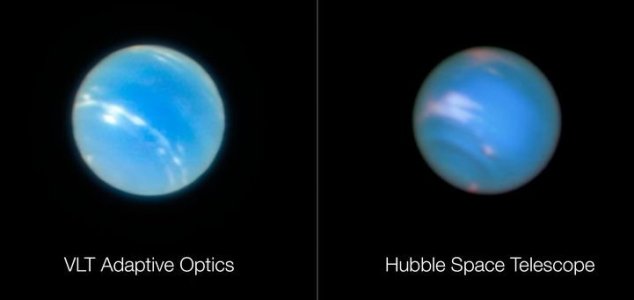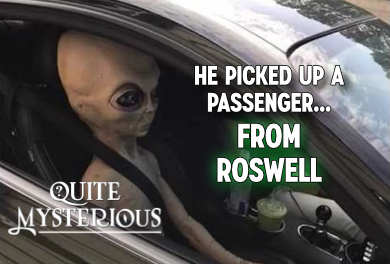Space & Astronomy
July 18, 2018 · 9 comments
9 comments

Using adaptive optics, the VLT's image is sharper than Hubble's. Image Credit: ESO / NASA / ESA
Now though, thanks to a recent innovation known as adaptive optics, it has been possible to compensate for this atmospheric distortion and obtain clearer observations from the ground.
The technology uses lasers and a deformable mirror system to correct the distortion in real-time.
The European Southern Observatory's Very Large Telescope (VLT) in Chile, which has been gradually improving its adaptive optics for two years, recently received a major new update.
The improvement is so significant in fact that the VLT can now take sharper images than the Hubble Space Telescope which is itself well known for capturing breathtaking photographs of the cosmos.
A recently released image of Neptune (above) shows just how far the technology has come.
Source: Popular Mechanics | Comments (9)
Telescope receives upgrade, exceeds Hubble
By T.K. RandallJuly 18, 2018 ·
 9 comments
9 comments
Using adaptive optics, the VLT's image is sharper than Hubble's. Image Credit: ESO / NASA / ESA
Adaptive optics technology has now made it possible for ground telescopes to take extremely sharp images.
Until recently, the only way astronomers could deal with the distortion caused by the Earth's atmosphere was to either build telescopes at high altitude or launch them in to space.Now though, thanks to a recent innovation known as adaptive optics, it has been possible to compensate for this atmospheric distortion and obtain clearer observations from the ground.
The technology uses lasers and a deformable mirror system to correct the distortion in real-time.
The improvement is so significant in fact that the VLT can now take sharper images than the Hubble Space Telescope which is itself well known for capturing breathtaking photographs of the cosmos.
A recently released image of Neptune (above) shows just how far the technology has come.
Source: Popular Mechanics | Comments (9)

The Unexplained Mysteries
Book of Weird News
AVAILABLE NOW
Take a walk on the weird side with this compilation of some of the weirdest stories ever to grace the pages of a newspaper.
Click here to learn more

Support us on Patreon
BONUS CONTENTFor less than the cost of a cup of coffee, you can gain access to a wide range of exclusive perks including our popular 'Lost Ghost Stories' series.
Click here to learn more
United States and the Americas
Ghosts, Hauntings and The Paranormal
UK and Europe
Palaeontology, Archaeology and History
Total Posts: 7,751,691 Topics: 324,023 Members: 203,511
Not a member yet ? Click here to join - registration is free and only takes a moment!
Not a member yet ? Click here to join - registration is free and only takes a moment!





























Please Login or Register to post a comment.